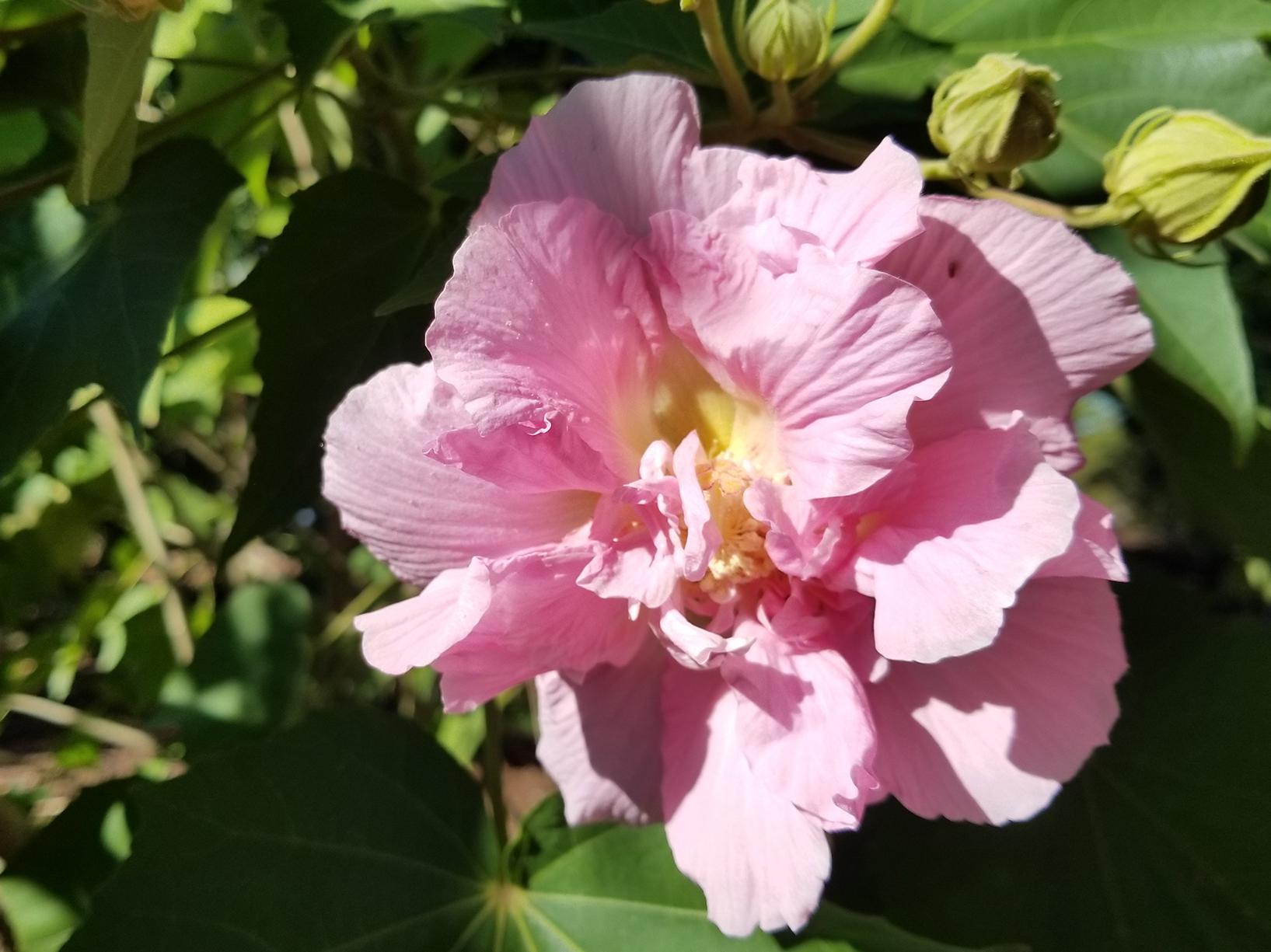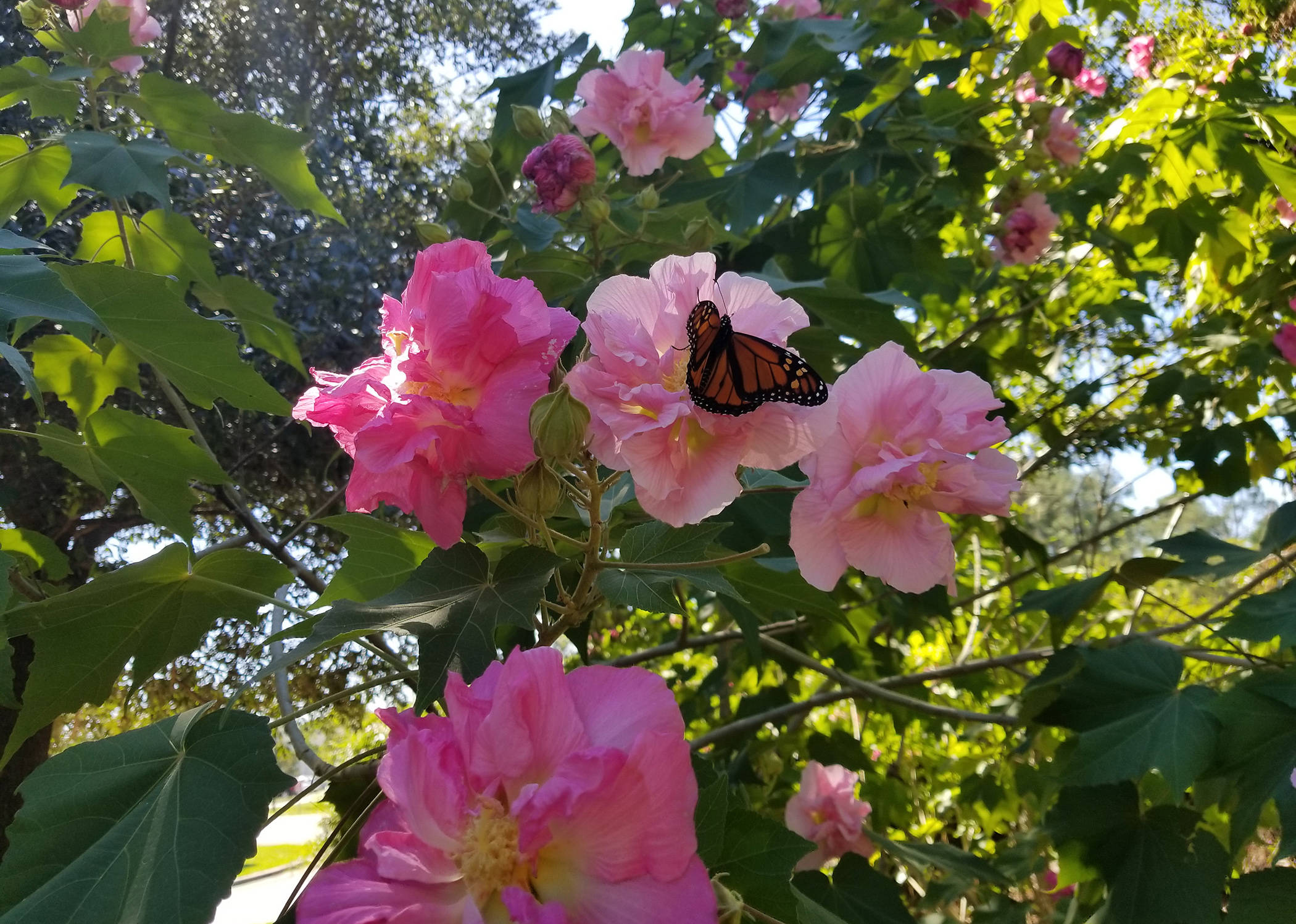Information Possibly Outdated
The information presented on this page was originally released on October 23, 2017. It may not be outdated, but please search our site for more current information. If you plan to quote or reference this information in a publication, please check with the Extension specialist or author before proceeding.
Heirloom Confederate rose thrives across state
I have weekly favorite plants, as you may know, and one of my favorites started blooming in earnest over the last couple of weeks. The sheer number of flowers on the Confederate rose makes this plant a must-have in our Mississippi landscapes.
Confederate rose is sometimes called Cotton rose and Cotton rosemallow. Despite the references to cotton, this plant is actually a hibiscus that originated in Asia.
Each plant produces literally hundreds of blooms, which open nearly white, turn pink and finally turn a bright red as they deteriorate with age. As the older flowers start to fade, new ones are opening. On a typical day, these plants have loads of flowers in varying shades of white, pink and dark pink.
Confederate rose is a wonderful plant that is really unknown outside of the Southeast, where it has been grown in landscape for hundreds of years.
Confederate rose is in its prime blooming season in the late summer and fall. I love the 6-inch-diameter flowers it produces at this time. This year, due to the mild winter, we had specimens in Biloxi at the Mississippi State University Coastal Research and Extension Center in their full glory in March. I was worried this early growth would limit their fall bloom period but it did not.
When choosing a place for this plant in your landscape, first consider that it needs a full-sun location. Then consider its future size, because it can reach an impressive height of 10 to 20 feet or more. I think the best landscape use is as a specimen plant in order to properly display the gorgeous and prodigious number of flowers.
Confederate rose likes a consistently moist planting bed, but it does not like wet feet. The leaves are large and frequently start to look a little wilted on Mississippi’s hot summer days. But not to worry. This plant will bounce back by the next morning, as long as the home gardener maintains consistent soil moisture.
Typically, this plant will die back to the ground after a hard frost, except in the extreme coastal counties, where it will overwinter. Confederate rose will emerge from winter dormancy to shoot up 8 to 10 feet or more the next season. Cut Confederate rose back to 4 to 6 inches in late winter to accommodate the next season’s growth, which springs up from the roots.
Confederate rose is a perfect example of an heirloom ornamental plant that everyone can enjoy in their gardens and landscapes. Take that, heirloom vegetables!
Heirloom ornamental plants are also called pass-along plants. Fall is the best time to collect root cuttings, but it can be difficult to propagate cuttings following the old-time methods.
If you want to learn more and see these gorgeous plants, view our specimens available at the Coastal Research and Extension Center in Biloxi, or watch the upcoming Southern Gardening TV segment we shot this week.







